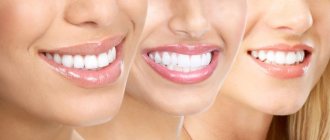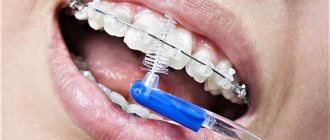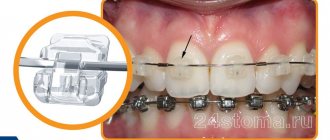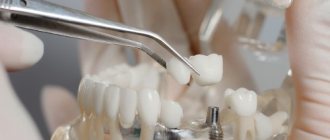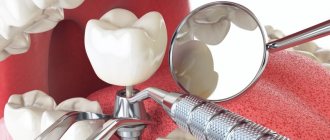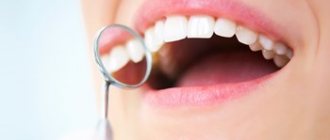Have you ever wondered how a smile affects your life? According to social research, people with a wide, open smile are more successful. When a person has pursed lips, it seems that he is constantly dissatisfied, frowning, and angry. In fact, pursed lips are not always a sign of dissatisfaction. Often in this way they try to hide teeth that are far from ideal. As a result, a person is simply embarrassed to smile, and it seems to others that he is always in a bad mood.
Many factors can affect the beauty of a smile. A person lives with some of them throughout his entire adult life, for example, with an incorrect bite or spaces between the teeth. Some appeared under the influence of lifestyle, as a result, even if the shape of the teeth is beautiful, darkened enamel does not add aesthetics to the smile. There are factors associated with dental diseases of the teeth - caries, periodontal disease, partial edentia.
Thanks to the filigree work of dentists, almost anyone can get a beautiful, perfect smile. For each patient, the doctor will select the technologies that are suitable for his clinical case.
Some terminology
The arrangement of the lower and upper teeth in relation to each other is called the bite. There is a similar concept - occlusion, which refers to the natural closure of the jaws. This is a process where the masticatory muscles, teeth, and temporomandibular joints take part. There are central, anterior and lateral clutches of the jaws. Central occlusion, in essence, is a bite. If it is correct, it is called physiological; if not, it is called abnormal or pathological. With normal occlusion, the functions of chewing and speech are not impaired. With pathology, it’s the opposite.
Interincisal angles.
Interincisal angles are the spaces between the cutting edges of the anterior group of teeth.
Read also: Straighten teeth without braces
With the harmonious construction of teeth, these angles should gradually increase from the center to the periphery: from a small closed angle between the central incisors, to a more direct and even open angle between the 2nd and 3rd teeth.
Tooth wear leads to a decrease or complete absence of interincisal angles, which makes the patient look older when he smiles.
At the same time, “female” teeth are characterized by rounded corners of the incisors, while “male” teeth are characterized by straighter ones.
Why is correct bite important?
Correct occlusion is an important component of a person’s full life. With various types of curvature of the teeth, their disproportionate location, a person experiences psychological discomfort - difficulties arise in communication, a career does not work out, and so on. But with pathological occlusion, problems that lead to disruptions in the functioning of the entire organism become more significant.
- Jaws that do not close properly make it difficult to chew food. In this form, it is poorly processed, which provokes diseases of the digestive system.
- With abnormal occlusion, different jaws are affected unevenly. There is a high probability of abrasion, damage, and loss of teeth.
- Improper closing of the jaws creates a large load on the temporal joint, and the jaw muscles do not relax. This can cause regular headaches.
It happens that malocclusions cause displacement of the upper cervical vertebrae, cerebrovascular accidents, and narrowing of the airways, leading to respiratory arrest during sleep.
Conclusion
Everyone should know what the correct bite is in a person in order to respond to the problem in a timely manner. Ignoring the situation leads to many unpleasant consequences, for example, impaired diction, pathological abrasion of enamel, impaired facial symmetry, dysfunction of the temporomandibular joint and others.
When correcting your bite, you must strictly adhere to the orthodontist's recommendations. Failure to comply with prescriptions and interruption of treatment not only slows down the restoration of the bite, but can also aggravate the situation. Make an appointment at Leonid Gorbunov's orthodontic studio to check your bite and make an effective correction.
Posted by:
What is the correct bite?
Often the special structure of teeth is mistaken for an anomaly. The main indicators of a correct physiological bite are the complete closure of the jaws, the absence of significant gaps between the teeth and the passage of the center line of the face between the incisors of both rows. There are several types of correct bite:
- Orthognathic is an ideal bite if the teeth are straight and there are no gaps (diastemas) between the lower and upper incisors. Here the upper row overlaps the lower teeth slightly, no more than 30%. Normally, the overlap should be 2-3 mm. This tooth structure is very rare.
- Direct – a borderline state between normality and anomaly. In a person with such a jaw structure, there is no overlap of the dentition on each other: the incisors touch with their apices, the arrangement of the arches is parallel. The negative consequences of this condition include wear of the front teeth due to the increased load on their cutting surface.
- Some people classify progenic bite as malocclusion: with the jaws tightly closed, the lower jaw is slightly pushed forward, although the front teeth of the lower row do not overlap the upper ones. The temporomandibular joint functions normally.
- Biprognathic - when both rows of teeth are slightly tilted forward towards the lips. This occlusion is especially noticeable when looking at the jaws from the side.
- Opisthognathic – inclination of the dentition into the mouth. In this case, the front teeth look very straight.
All types of correct bite generally ensure a harmonious appearance and full functioning of the dental system. However, according to statistics, the number of people with ideally correct structure of teeth and jaws ranges from 10 to 20%.
Aesthetic parameters
In addition to the above, much attention is paid directly to the aesthetic shape of the teeth. It depends on the proportions of the face. Thus, when making prosthetics, the parameters of the proportional relationship between the face and teeth are taken into account. In particular, when designing the crowns of the anterior teeth, the parameters according to V.A. Pereverzev are used, which can be found below:
No less significant in dentistry is the Fibonacci number or the so-called “golden ratio” rule. As you know, many “golden” proportions can be found in the structure of the human body. As it turned out, the rule of the “golden ratio” is also observed in relation to the human dental system. For the first time, a dentist from the USA, Robert Ricketts, was involved in systematizing knowledge in this area. As you know, the “golden ratio” is a ratio of 1 to 1.618. Ricketts determined that the ratio of the width of the upper central incisor to the width of the lower one is precisely the ratio of 1 to 1.618. Moreover, this is not the only coincidence. This proportion is observed when comparing the width of the lower incisors and the six anterior teeth of the upper jaw and many other measurements.
When forming incisors, they also use the 1 to 16 rule. For example, this rule is decisive when determining the height and width of the central incisor. The height is 1/16 of the straight line connecting the pupils and the base of the chin, and its width is 1/16 of the line connecting the cosmetic center of the face and the protrusion of the cheekbone.
Read also: Wisdom tooth eruption
The shape of the teeth also determines the masculinity and femininity of the face. It has been noticed that the second incisors in the female version are more rounded, while the male ones have a more rectangular shape. Rounded fangs give the face a more benevolent expression, sharp fangs give it an aggressive expression.
Undoubtedly, modern dentists take all of the above into account when creating dentures. However, some patients do not like a too perfect smile and then the denture is deliberately “decorated” with defects.
When preparing this article, information was used: from here.
Self-diagnosis
The presence or absence of an anomaly can be determined independently. You need to stand in front of the mirror, swallow and naturally close your teeth. The jaw line normally looks like this:
- There is no gap between the rows - the teeth are in close contact with each other.
- The imaginary vertical lines between the lower and upper incisors coincide.
- The upper row overlaps the lower teeth by a maximum of a third of the height.
- The cutting edge of the lower incisors is in contact with the palatal cusps of the upper ones.
- During chewing movements, the molars do not lose contact with each other.
- The upper dental arch, similar to a semi-oval, is larger than the lower one and is inclined slightly towards the mouth. The lower one is similar to a parabola and is directed towards the larynx.
Sometimes it is difficult to distinguish between normal and pathological. An orthodontist can assess the state of the structure of the dental system.
Parallelism of horizontal landmarks.
One of the most important signs of a harmonious smile is the parallelism of imaginary lines: the interpupillary line (in the picture there is a blue line connecting the right and left pupil of the eye) and the lip line (in the picture there is a red line drawn between the corners of the mouth).
Both of these lines should also be parallel to the lines connecting the edges of the central incisors (green) and the incisal cusps of the canines (blue)
When should the situation be corrected?
There are often cases when, with a normal physiological occlusion, it is necessary to carry out correction. Direct occlusion leads to tooth wear, and progenic and biprognathic bites can cause aesthetic discomfort, for example, when the upper lip is very short, exposing the front teeth, or when they are large and unsightly.
Abnormal types of closure with obvious defects require mandatory correction, since such pathologies interfere with the normal functioning of the jaws, have a negative effect on the body, and distort the proportions of the face.
There are several pathological levels:
- Violation of the shape, position and number of teeth.
- The size of the dentition is increased or decreased.
- Abnormal positions and sizes of the jaw bones.
The severity of the pathology is influenced by the area and degree of deformation of the constituent elements of the dental system. Therefore, when identifying an abnormal bite, it is important not only to identify the defect, but also to establish the reasons for its development.
What is
A bite is a principle diagram of the closure of the upper and lower dentition in a relaxed state of the jaw, that is, when it is produced without excessive force.
Correct bite has a special name that is used in dentistry - physiological. There are several of its varieties, but they are all grouped according to one characteristic: these types do not provoke violations.
Types of anomalies
Correct bite is a fairly rare occurrence. Much more often you can meet people with one or another anomaly that needs to be corrected.
- Distal or prognathic bite is an excessive protrusion of the upper jaw. The lower jaw is underdeveloped.
- Medial, or mesial - bite with advancement of the mandibular bone. There is overlap of the upper crowns with the lower teeth.
- With an open bite, there is no closure of the teeth. Diastemas can be on the side or between the elements of the anterior group.
- Deep bite – significant (more than 60%) coverage of the upper incisors by the lower incisors. This anomaly has another name - “traumatic” bite, since the gums and palate are often damaged during chewing.
- A crossbite in which the jaws intersect diagonally like scissors.
- A low bite develops as a result of teeth grinding against each other or after they fall out.
People with improper occlusion often experience an asymmetrical oval of the face in the lower part, speech defects (usually a lisp), and unpleasant sensations in the temples during chewing movements. Significant plaque deposits on some teeth can also be a result of abnormal jaw closure. This occurs due to uneven load on individual teeth during chewing movements.
Individual smile design
Creating a natural and beautiful smile is a separate science and art that requires highly qualified dentists and attention to the smallest details. At the Aesthetic Dent clinic, you will undergo a full diagnosis and calculation, after which they will determine the ideal shape and size of your teeth.
The upper central incisors are the starting point for creating a beautiful smile. Based on the principles of the golden section, the standard dimensions of the central incisor are determined by the so-called “1 to 16” rule. The rule states that the ideal height of the central incisor is 1/16 of the distance from the middle of an imaginary line drawn between the pupils to the base of the chin; the ideal width of the central incisor is 1/16 of the distance between the midline of the face and the protrusion of the zygomatic bone. It should be borne in mind that the indicated ratios are quite arbitrary, and in reality there is no strong, scientifically verified data on how often they occur in nature. And, nevertheless, using this method to calculate the ideal size of the central incisor, this indicator can be taken as a starting point when developing a smile design. After establishing the ideal size of the central incisors, it is necessary to determine their optimal position. In this case, factors such as phonetics, the smile line (the number of teeth that is visible during a wide smile or when the lip is at rest), as well as the position of the central incisor when the lower jaw moves forward, should be taken into account. There are many nuances and subtleties that a doctor must take into account to create an ideal smile.
Formation of the correct bite
The bite is formed from birth, and the process lasts up to 15 years. Development occurs in stages, from the moment the first primary incisors appear. After changing all the elements, the bite becomes permanent. Its formation is directly influenced by both hereditary and external factors.
In childhood, it is important to pay increased attention to the prevention of the development of correct bite, so that the jaw bones and teeth alignment correspond to the physiological norm. For proper bite development it is necessary:
- Keep your baby breastfed from birth;
- Try not to accustom your baby to a pacifier and pacifier. If this does not work, use rubber as little as possible;
- Avoid developing bad habits such as sucking fingers and toys. When this cannot be avoided, by the age of two the child should be weaned from harmful actions.
- During sleep, the child's mouth should be closed and the head should not be thrown back.
- From the beginning of the growth of baby teeth, it is necessary to include solid foods in the diet.
Pathologies in the development of the dental system can occur with rickets, dyspepsia, and tuberculosis. It is also necessary to pay attention to ENT diseases.
Oral hygiene is an important condition for the development of correct bite. You should treat baby teeth in a timely manner and try to ensure that they last their intended time. Irregular teeth replacement can cause the development of pathology. It is unacceptable for permanent teeth to occupy niches with milk teeth that have not yet fallen out.
Zenith of the gingival contour.
The zenith of the gum is its most concave part around the neck of the tooth (indicated by dots in the photo).
The level of zeniths near different teeth in the smile zone should be at different levels. For the central incisors and canines - approximately at the same level (or slightly higher for the canines), for the lateral incisors - slightly lower than both (as shown by the lines in the photo). At the same time, it is equally important that the zeniths on symmetrical teeth are at the same level. This is especially important to consider if this area becomes noticeable when smiling. When even with the most open smile the gums are not exposed, then there is no serious need to set the zeniths perfectly symmetrically.
In this case, attention is drawn to the too low zenith level on tooth 12; it is significantly lower than the symmetrical tooth 22. There is also a slight difference in the position of the zeniths on the central incisors (teeth 11 and 21). As a result of treatment, these shortcomings were eliminated, as can be seen in the first photo.
Transition from normal to anomaly
Over the years, physiological correct occlusion may undergo changes in a pathological direction. This is possible for a number of reasons:
- due to maxillofacial injuries;
- with the loss of part of the teeth and their prolonged absence;
- for gum diseases;
- if prosthetic work was performed untimely or incorrectly.
An ideal bite can suffer due to extreme stress. This phenomenon is usually accompanied by the tone of the masticatory muscles, increased tooth wear, and bruxism (grinding), which provokes displacement of the jaw bones.
Aesthetic dentistry. 10 signs of a perfect smile.
If you want to improve the appearance of your smile, if you don’t like something about it, but you cannot accurately and correctly formulate what exactly, if you want to talk with your dentist about the aesthetics of your smile in the same language, then the following note is just right for you.
Nature (or God... depending on your views on life) has made us different. And our originality and uniqueness have its own charm. But what to do when this uniqueness goes too far beyond our ideas of beauty? How to formulate your claims to nature (and perhaps to the previous intervention of dentists)? To assess the aesthetic component of our face, lips, teeth - everything that gives rise to a beautiful, harmonious smile, it turns out that there are many parameters. This is what dentists use (at least should use) when planning changes in your appearance. Since there are very, very many different nuances, and I do not have the task of making each of you an expert in the field of aesthetic dentistry , we will focus on the ten simplest and most important.
Read also: The crown on a tooth is swaying, what to do?
How to fix the problem
If nature has deprived a person of a correct bite, you can get rid of the problem with the help of a variety of orthodontic devices, of which there are a great many today.
For minor defects, correction is carried out with removable trays or plates. For more complex anomalies, it is suggested to use braces. Nowadays it is possible to install aesthetic braces that are almost invisible on the teeth. Ceramic structures from well-known manufacturers allow you to achieve a perfect smile without feeling awkward or uncomfortable.
Sometimes surgical intervention is required to achieve an ideal bite. Surgery is necessary if a person has severely crowded teeth or needs to reduce the size of their jaw.
The period of correction of the defect depends on the patient’s age, the complexity of the anomaly and the selected device. Literally 2–3 decades ago, the bite was corrected only for children under 16 years of age. Now you can get rid of the anomaly at any age. True, in adult patients the duration of treatment is much longer, since the jaw bone tissue has already formed. As a result, the process of teeth shifting in the desired direction proceeds slowly.
It is a mistake to think that a correct bite is important only from an aesthetic point of view. An organism is a system where all organs are interconnected. Pathologies in the structure of the dental system negatively affect both the psychological and physiological state of a person. In order for your smile to become beautiful and conducive to communication, it is worth sacrificing a certain amount of money and some inconveniences associated with measures to correct the bite medically.
Sources used:
- Fadeev, R. A. Classifications of dental anomalies. System for quantitative assessment of dentofacial anomalies / R.A. Fadeev, A.N. Ispravnikova. - M.: N-L, 2011.
- Rosenberg J (2010-02-22). "Malocclusion of teeth". MedlinePlus.
- National Library of Medicine (USA)
Treatment for missing teeth
The specificity of the anatomical structure of the jaw apparatus is that even complete edentia does not guarantee the formation of correct occlusion after implantation. The result of prosthetics is largely determined by the degree of development of defects and anomalies that formed even before the loss or removal of elements. If the row ratio was within acceptable limits, it is enough for the doctor to take into account the necessary adjustments when developing a replacement structure, but the presence of problems with bone tissue will require the use of more complex restoration techniques.
How to check and find out if the bite is correct when making a jaw prosthesis without teeth? For this purpose, special wax rollers are used, placed in the oral cavity. The measuring instruments are a ruler arc and an intraoral plate. After collecting the necessary readings, first a plaster prototype is created, and then the final structure.
Position of cutting edges.
The cutting edges of the central group of teeth are also located at different levels. For the central incisors and canines - approximately at the same level, for the lateral incisors - slightly higher (as marked by lines in the photo).
Again, due to the abrasion of teeth with age, the cutting edges of the teeth become at the same level, the line connecting them takes on a straight rather than convex appearance, and sometimes (with increased pathological abrasion) even concave. Therefore, to make a smile more “youthful,” you need to return the relationship of the cutting edges to a harmonious one.
It can also be noted that the dominance of the central incisors over the lateral incisors and canines also gives the smile a more youthful appearance.
The dominance of the canines, their sharp, prominent cutting cusps, make the smile more aggressive. This effect is based on the fact that in nature, long, sharp, well-developed fangs are characteristic of predators, whose entire philosophy of existence is based on aggression towards their prey.
ROCS "Spartak" Moscow
"Spartak" Moscow
The ROCS brand paid special attention to football fans. In 2018, the Diarcy Group of Companies, the owner of the ROCS brand, produced a special ROCS set of FC "Spartak-Moscow" - "Spartak's Smile". The set includes: two “ROCS Spartak Classic” toothbrushes, red and black, with the logos of the Spartak-Moscow football team, two “ROCS Magic Whitening” toothpastes (tube in the colors of the “Spartak-Moscow” team) and “ROCS Sensational Whitening” (perfect the color of the tube for men is black), red “ROCS Grapefruit” mouthwash, ROCS Red Edition dental floss and the most important attribute – the “ROCS Spartak” gift box. There is a set for growing football fans. A special red and white box “ROCS Spartak” contains dental care products for a young boy.
Features of physiological prosthetics
To make the most comfortable dentures, you cannot follow standard solutions. Each patient is individual, therefore, at Dial-Dent, a dental prosthesis is formed taking into account all the characteristics of a particular patient. To do this, you may need to come to the fitting again or conduct a photo shoot, but all these actions are aimed at obtaining a high-quality result. A properly made denture can completely change your appearance, giving you confidence, youth, and beauty. The convenience of using high-quality complete dentures also adds positive emotions and allows you to enjoy life to the fullest.
Family Dental specialists carefully approach the problems of each patient, finding a solution to suit every taste, budget and requirement. Make an appointment with an orthopedic dentist at Dial-Dent and restore your lost teeth, bringing back all the colors of your life.
Fangs
We associate any predator with long and sharp fangs. Of course, modern men cannot be called predators, but their primitive ancestors were such, because when their survival was threatened, they literally had to sink their teeth into the throats of their enemies. Apparently, the structure of their fangs has changed little since then, since they are still sharp, whereas in women they are more rounded.
The cat and the parrot need to be evicted from the apartment: a St. Petersburg resident went to court
How to make a set of bathroom containers from plastic containers: master class
The Ministry of Transport will begin testing fully unmanned vehicles on the roads by the end of the year
Surprisingly, but true: when a woman smiles, the distance between her fangs becomes equal to the width of the nose, while in men it coincides with it when the mouth is closed in a calm state.


